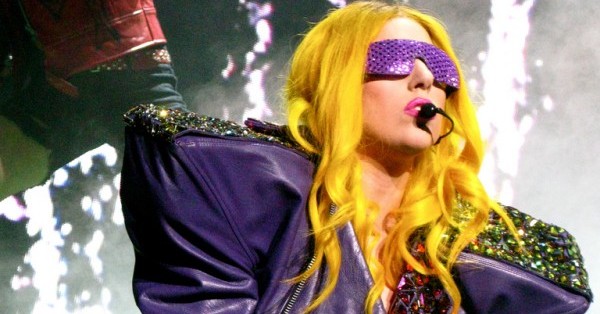
Her music videos are surrealist revels, her outfits could make Elton John blush, and her riffs on gender and sexuality have fueled rumors of hermaphroditism. Semiotically speaking, Lady Gaga is a walking court of the Sun King—and her uses of performance and identity drive some scholars wild.
As conference papers, seminar panels, and journal articles proliferate, the rise of Gaga Studies offers an eccentric peek into the hallowed corridors of academic theory at this moment. Last fall, the University of South Carolina offered a course on Gaga and the sociology of fame; elsewhere, the pop singer has entered the syllabus in courses on such topics as “monster theory” and francophone theater.
Professor Richard Gray of Carson-Newman College in Jefferson City, Tennessee, who is editing a collection of essays on Gaga, says he was first inspired when he saw her perform “Paparazzi” at an awards show. He sketched an essay comparing her performances to the Theatre of Cruelty, put out a call for Gaga papers, and quickly got hundreds of responses. “The most common refrain,” he says, “was, ‘I’m so excited that someone is doing this, because I thought I was the only one who thought this was important.’ ”
One popular angle for critics to take on the singer is French visual theory: power through pageantry, appropriate for the YouTube era’s society of the spectacle. Another recurring theme is transgression, Gray says: “This idea of the grotesque, monsters, fairy tales—not in a Disney sense but in a scare-the-heck-out-of-you sense. Fairy tales like Grimm or Perrault: a manual for how to conduct your life in a world in which there is danger.”
Since March 2010, the online journal Gaga Stigmata has churned out the most intense ongoing critical conversation on the singer. The editors are Meghan Vicks, a graduate student in comparative literature at the University of Colorado at Boulder, and Kate Durbin, a Los Angeles-based writer and performance artist. “When Gaga’s videos would come out,” Durbin says, “there would be such a response online. It was frustrating to think that I would have to wait five years to read something about it in an academic journal. So, I thought, why not help criticism catch up? Let’s see if we can shape pop culture and critique it.” Indeed, the digital immediacy of Gaga Stigmata suits the pace of 21st-century celebrity, allowing readings of the singer to update as fast as her own reinventions. “When the meat dress happened,” Durbin says, referring to Gaga’s garb at the MTV Video Music Awards last September, “we posted stuff a week later.”
In academe, Vicks says, she dreams of lecture halls in which scholars dress conceptually, like Gaga: “While I’m in the classroom explaining how the procession of simulacra works, Gaga is showing it on the street. High theory dictates how you view and understand the world, and what is high theory but discursive spectacle?”
Are academics unduly gaga over Gaga? “She’s really adamant about serious meaning and high art,” Durbin maintains. “That may be her one entirely new thing. Warhol brought pop into the museum; Gaga is bringing high art into pop culture.”

